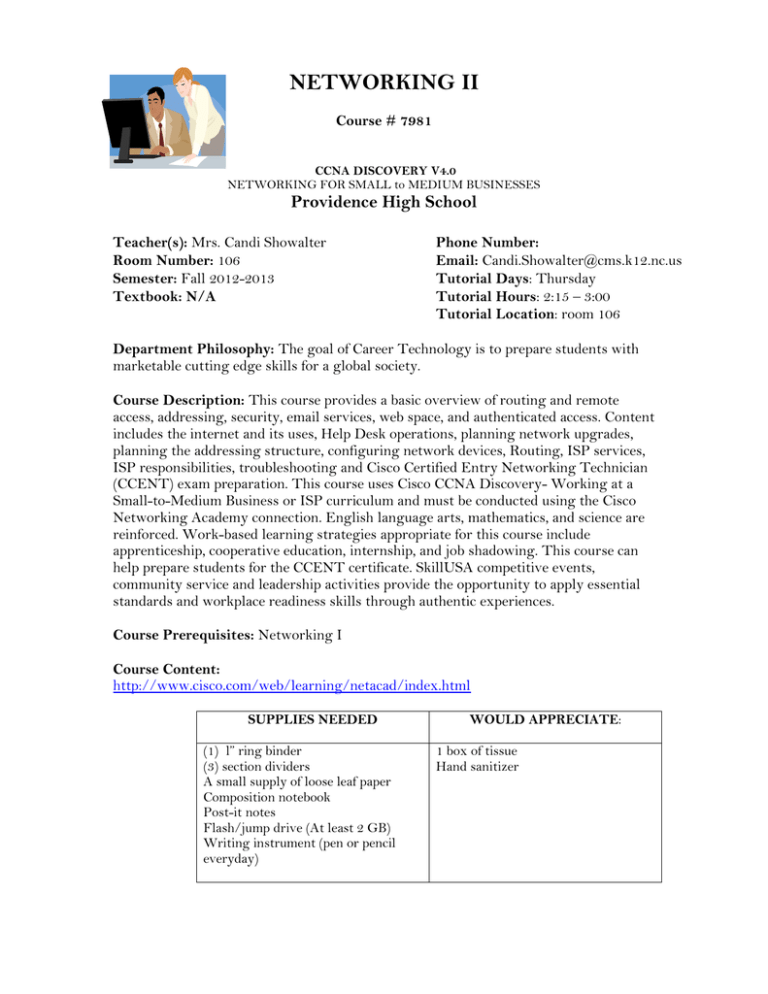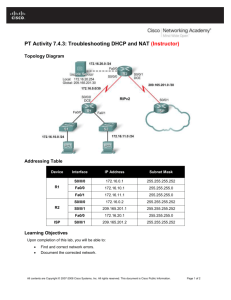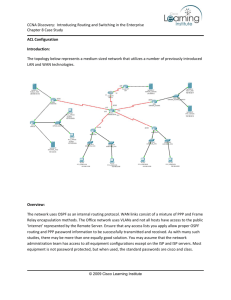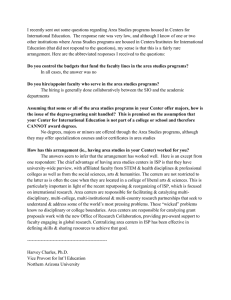international business course syllabus 06
advertisement

NETWORKING II Course # 7981 CCNA DISCOVERY V4.0 NETWORKING FOR SMALL to MEDIUM BUSINESSES Providence High School Teacher(s): Mrs. Candi Showalter Room Number: 106 Semester: Fall 2012-2013 Textbook: N/A Phone Number: Email: Candi.Showalter@cms.k12.nc.us Tutorial Days: Thursday Tutorial Hours: 2:15 – 3:00 Tutorial Location: room 106 Department Philosophy: The goal of Career Technology is to prepare students with marketable cutting edge skills for a global society. Course Description: This course provides a basic overview of routing and remote access, addressing, security, email services, web space, and authenticated access. Content includes the internet and its uses, Help Desk operations, planning network upgrades, planning the addressing structure, configuring network devices, Routing, ISP services, ISP responsibilities, troubleshooting and Cisco Certified Entry Networking Technician (CCENT) exam preparation. This course uses Cisco CCNA Discovery- Working at a Small-to-Medium Business or ISP curriculum and must be conducted using the Cisco Networking Academy connection. English language arts, mathematics, and science are reinforced. Work-based learning strategies appropriate for this course include apprenticeship, cooperative education, internship, and job shadowing. This course can help prepare students for the CCENT certificate. SkillUSA competitive events, community service and leadership activities provide the opportunity to apply essential standards and workplace readiness skills through authentic experiences. Course Prerequisites: Networking I Course Content: http://www.cisco.com/web/learning/netacad/index.html SUPPLIES NEEDED (1) l” ring binder (3) section dividers A small supply of loose leaf paper Composition notebook Post-it notes Flash/jump drive (At least 2 GB) Writing instrument (pen or pencil everyday) WOULD APPRECIATE: 1 box of tissue Hand sanitizer Units of study include: Objective 1.00 – SWBAT – (4%) 1. 2. 3. 4. 5. 6. Describe how the Internet is evolving and the various ways that businesses are using the Internet. Describe the importance of standards in the continuing growth of the Internet. Describe the purpose of an ISP and the services that it offers. Describe the hierarchical structure of the Internet and the purpose of the Point of Presence (POP) and the Internet Exchange Point (IXP). Identify the types of devices used by the ISP to provide services and describe the importance of scalability in the ISP network. Describe the various network support teams that work at an ISP and the roles and responsibilities of each one. Objective 2.00 SWBT: (4%) 1. 2. 3. 4. Describe the various roles of help desk and installation technicians. Describe the seven layers of the OSI model and how the OSI model is used in troubleshooting network issues. Identify common tools and diagnostic procedures of help desk technicians. Describe onsite procedures to resolve issues. Objective 3.00 SWBT – (9%) 1. 2. 3. 4. 5. 6. Perform a customer site survey. Describe the importance of planning when beginning a network upgrade. Describe physical topology considerations when upgrading a network. Describe structured cabling. Describe network configuration and interaction of network devices. Describe other considerations when planning an upgrade. Objective 4.00 SWBAT: (9%) 1. 2. 3. Describe how IP Addressing is implemented in the LAN. Subnet a given network to allow for efficient use of IP address space. Explain how Network Address Translation (NAT) and Port Address Translation (PAT) are used in a network. Objective 5.00 SWBAT: (19%) 1. 2. 3. 4. 5. Configure a router with an initial configuration. Use Cisco SDM to configure a Cisco ISR with LAN connectivity, Internet connectivity and NAT. Configure a Cisco router for LAN connectivity, Internet connectivity and NAT using the Cisco IOS CLI. Configure a WAN connection from customer premises to an ISP. Describe setup and configure a standalone LAN switch. Objective 6.00 SWBAT: (14%) 1. 2. 3. 4. Describe the purpose and function of dynamic routing and the protocols used to implement it. Configure RIPv2 dynamic routing using the Cisco IOS. Describe the use of exterior routing protocols across the Internet. Enable BGP on a customer site router. Objective 7.00 SWBAT: (9%) 1. 2. 3. 4. Describe the network services provided by an ISP. Describe the protocols that support the network services provided by an ISP. Describe the purpose, function, and hierarchical nature of the Domain Name System (DNS). Describe and enable common services and their protocols. Objective 8.00SWBAT: (9%) 1. 2. 3. 4. Describe ISP security policies and procedures. Describe the tools used in implementing security at the ISP. Describe the monitoring and managing of the ISP. Describe the responsibilities of the ISP with regard to maintenance and recovery. Objective 9.00 SWBAT: (14%) 1. 2. 3. 4. 5. 6. Use the OSI model as a framework for troubleshooting network problems. Identify and correct problems with hardware and operation at Layer 1 and Layer 2. Troubleshoot IP addressing problems, including subnet mask, host range errors, DHCP and NAT issues. Identify and correct problems with RIPv2 configuration and implementation. Explain possible causes of problems occurring with user applications and how to recognize symptoms of DNS failures. Create a plan to prepare to take the ICND1 examination in order to obtain a CCENT certification. Grading Scale Area Percentage Learning Process (Homework, Classwork, 40 Participation) Assessments (Test, Quiz, Projects) 60 Late Assignments: Any late work will automatically lose twenty (20) points for each day late. Make-up Policy: Each student has five (5) days from the date of an excused absence to complete any makeup work.




